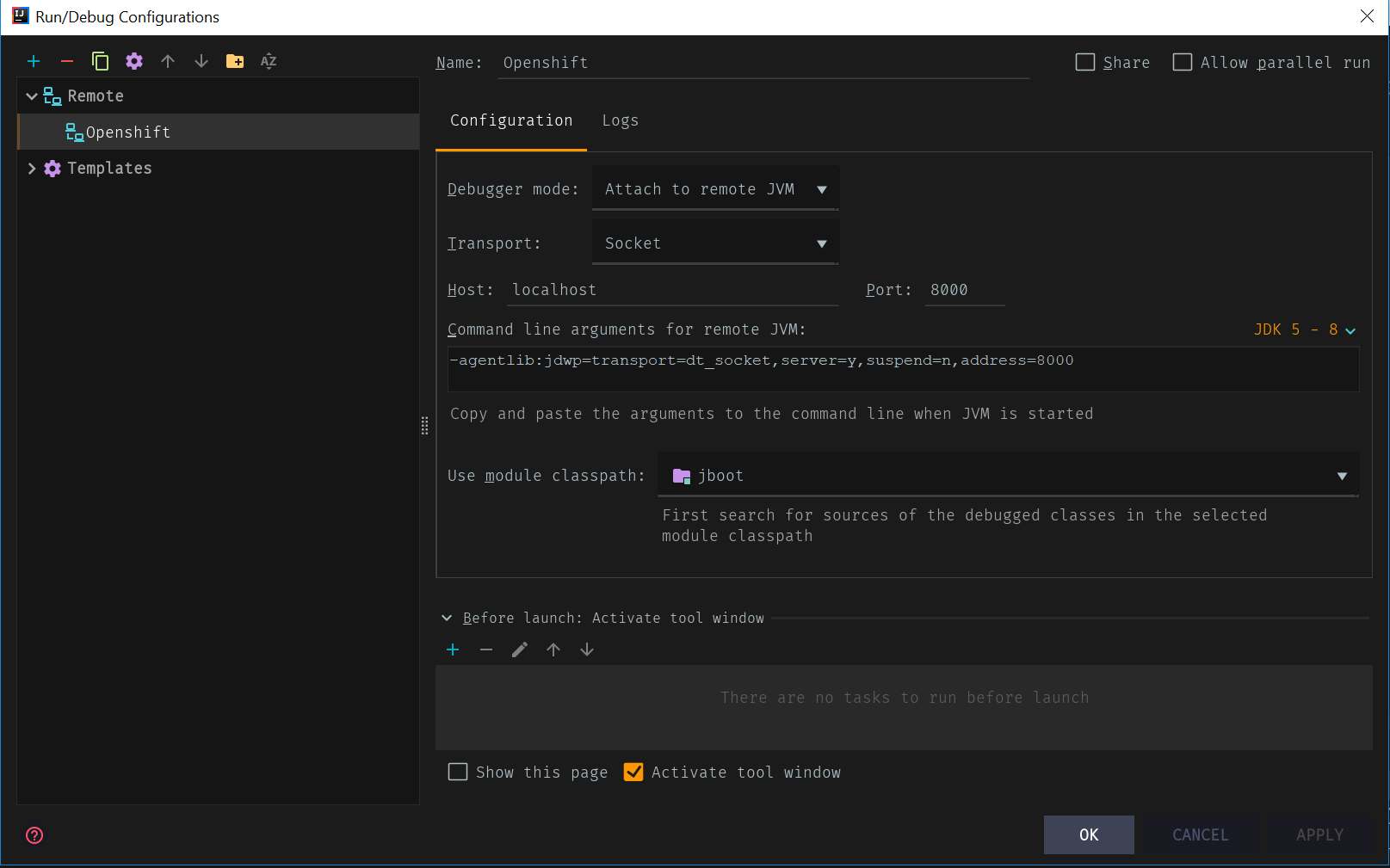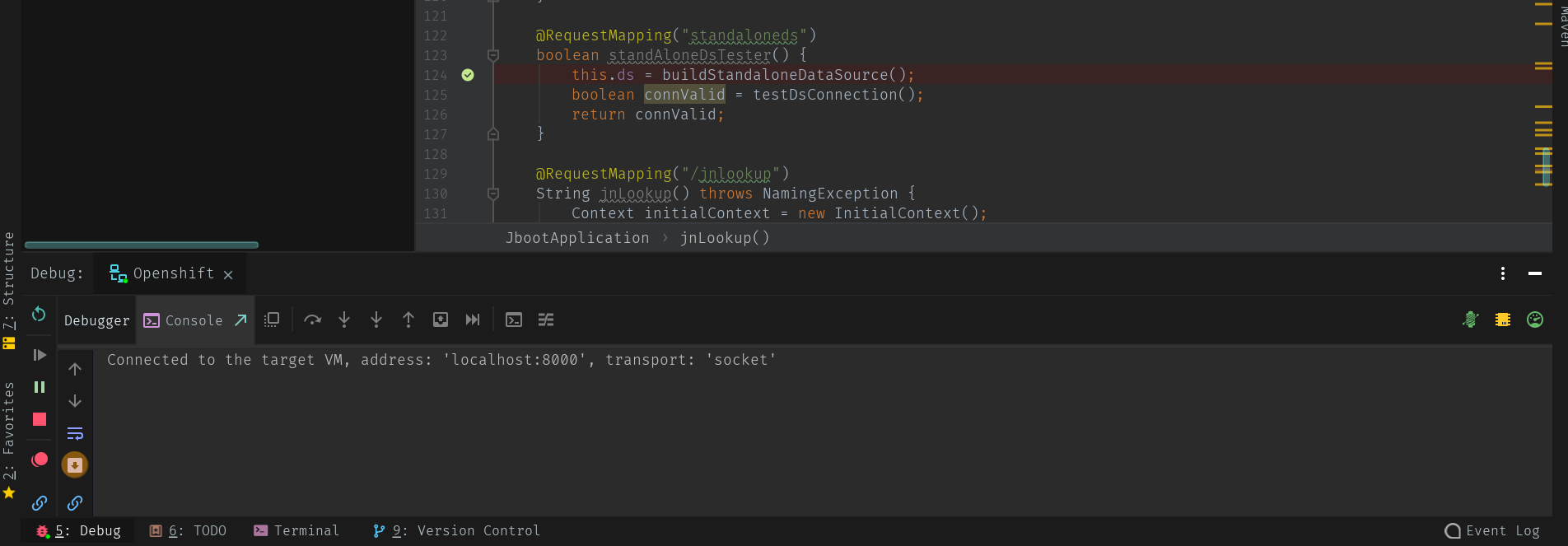This post will discuss debugging a JAVA application running inside a container.
Red Hat container images
When you bootstrap your JVM, you should have a way to enable JVM debug. For example Red Hat S2I images allows you to control classpath and debugging via environment variables.
# Set debug options if required
if [ x"${JAVA_DEBUG}" != x ] && [ "${JAVA_DEBUG}" != "false" ]; then
java_debug_args="-agentlib:jdwp=transport=dt_socket,server=y,suspend=n,address=${JAVA_DEBUG_PORT:-5005}"
fi
- Setting the
JAVA_DEBUGenvironment variable inside the container totruewill add debug args to JVM startup command - Configure port forwarding so that you can connect to your application from a remote debugger
If you are using
tomcatimage replaceJAVA_DEBUGenvironment variable toDEBUG
Using the oc command, list the available deployment configurations:
oc get dc
Enable Debug
Set the JAVA_DEBUG environment variable in the deployment configuration of your application to true, which configures the JVM to open the port number 5005 for debugging.
oc set env dc/MY_APP_NAME JAVA_DEBUG=true
Disabling the health checks is not mandatory but it is recommended because a pod could be restarted while the process is paused during remote debugging. You can remove the readiness check to prevent an unintended restart.
Redeploy
Redeploy the application if it is not set to redeploy automatically on configuration change.
oc rollout latest dc/MY_APP_NAME
Configure port forwarding from your local machine to the application pod. List the currently running pods and find one containing your application. $LOCAL_PORT_NUMBER is an unused port number of your choice on your local machine. Remember this number for the remote debugger configuration.
If you are using
tomcatimage replace the port5005to8000
oc get pod
NAME READY STATUS RESTARTS AGE
MY_APP_NAME-3-1xrsp 1/1 Running 0 6s
...
oc port-forward MY_APP_NAME-3-1xrsp $LOCAL_PORT_NUMBER:5005
IntelliJ Config
Create a new debug configuration for your application in IntelliJ IDE:
-
Click Run → Edit Configurations
-
In the list of configurations, add Remote. This creates a new remote debugging configuration
-
Enter a suitable name for the configuration in the name field
-
Set the port field to the port number that your application is listening on for debugging
-
Click Apply
-
Click Run -> Debug -> Select Profile
When you are done debugging, unset the JAVA_DEBUG environment variable in your application pod.
oc set env dc/MY_APP_NAME JAVA_DEBUG-
Non Red Hat container images
If you are using openjdk image to build application, update ENTRYPOINT as below to pass options to the JVM through $JAVA_OPTS environment variable
FROM openjdk:11.0.3-jdk-slim
RUN mkdir /usr/myapp
COPY target/java-kubernetes.jar /usr/myapp/app.jar
WORKDIR /usr/myapp
EXPOSE 8080
ENTRYPOINT [ "sh", "-c", "java $JAVA_OPTS -jar app.jar" ]
And then set deployments JAVA_OPTS environment variable
oc set env deployment MY_APP_NAME JAVA_OPTS=-agentlib:jdwp=transport=dt_socket,address=*:5005,server=y,suspend=n

